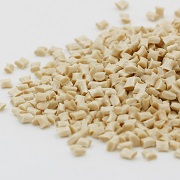Liquid crystal polymers (LCPs) form a family of polymer substances that can possess the dual properties of both crystals and liquids. LCPs feature multiple valuable properties, such as a very high flow without flash propensity; flame retardancy; excellent chemical inertness and thermal resistance; mechanical and tensile strength; dimensional stability and weatherability; low thermal expansion coefficients; as well as good processability (esp. via injection moulding) and productivity. LCPs are customizable, allowing a high degree of adjustability to vary their properties, subject to a specific consumption area and conditions. Therefore, these benefits make liquid crystal polymers widely used in a broad range of applications, including automobiles, smartphones, computers, printers, electrical insulation systems and connectors, high-performance fibres, composite materials, optical storage elements, holography, actuators, microelectromechanical systems, medical devices, to name just a few.
Liquid crystal polymers: structure of the global consumption by end-use sector

The well-known LCP tradenames include Laperos (Polyplastics, which is now a wholly owned subsidiary of Daicel; as of 2022, Laperos LCPs are for sale in the EMEA and the Americas, apart from other regions), Siveras (Toray), SumikaSuper (Sumitomo Chemical), UENO (Ueno Fine Chemicals Industry), Vecstar (Kuraray), Xydar (Solvay) and Vectra / Zenite (Celanese Corporation). Each of these tradenames combines an extensive portfolio of polymer products with various characteristics, filler compositions, and attributes to serve diverse applications and markets.
The commercialization of LCPs began in the 1960s, and the interest towards them has been steadily growing since then. As of 2022, the value of the global market for liquid crystal polymers exceeds USD1.5 bn. This laid a solid groundwork for the liquid crystal polymers market, which is backed by their highly value-added and R&D-oriented nature with a focus on high-tech applications. This is evident despite the recent serious challenges this market is facing, like the decline in demand for high-performance polymers in Europe and some Asian countries, customer destocking, supply constraints, soaring energy/feedstock/logistics costs, political and macroeconomic instability, and galloping inflation. These challenges adversely affect multiple LCP-consuming sectors and key players in the polymer market. However, as alluded to before, the fundamentals of the LCP market remain strong, which leads to various opportunities and developments in the market. To illustrate this point, one can mention the decision by Sumitomo Chemical to boost its existing LCP production capacity by 30% by Q4 2023. The decision was driven by the development of 5G telecom networks, the electric vehicle industry, and renewable energy sector. Likewise, earlier, both Kuraray and Polyplastics decided to expand their LCP production capacities in Japan and Taiwan, respectively.
Apart from the good prospects in various, often innovative, LCP-consuming sectors, significant opportunities are related to the domains of circular economy, polymer recycling, and sustainability. The latter trend has gained significant attention at the world’s largest international plastics and rubber industry exhibition K2022, held in Düsseldorf, Germany.
Find more cutting-edge information on the global liquid crystal polymers market in the in-demand research report “Liquid Crystal Polymers (LCP) 2022 Global Market Review and Forecast to 2031”.
